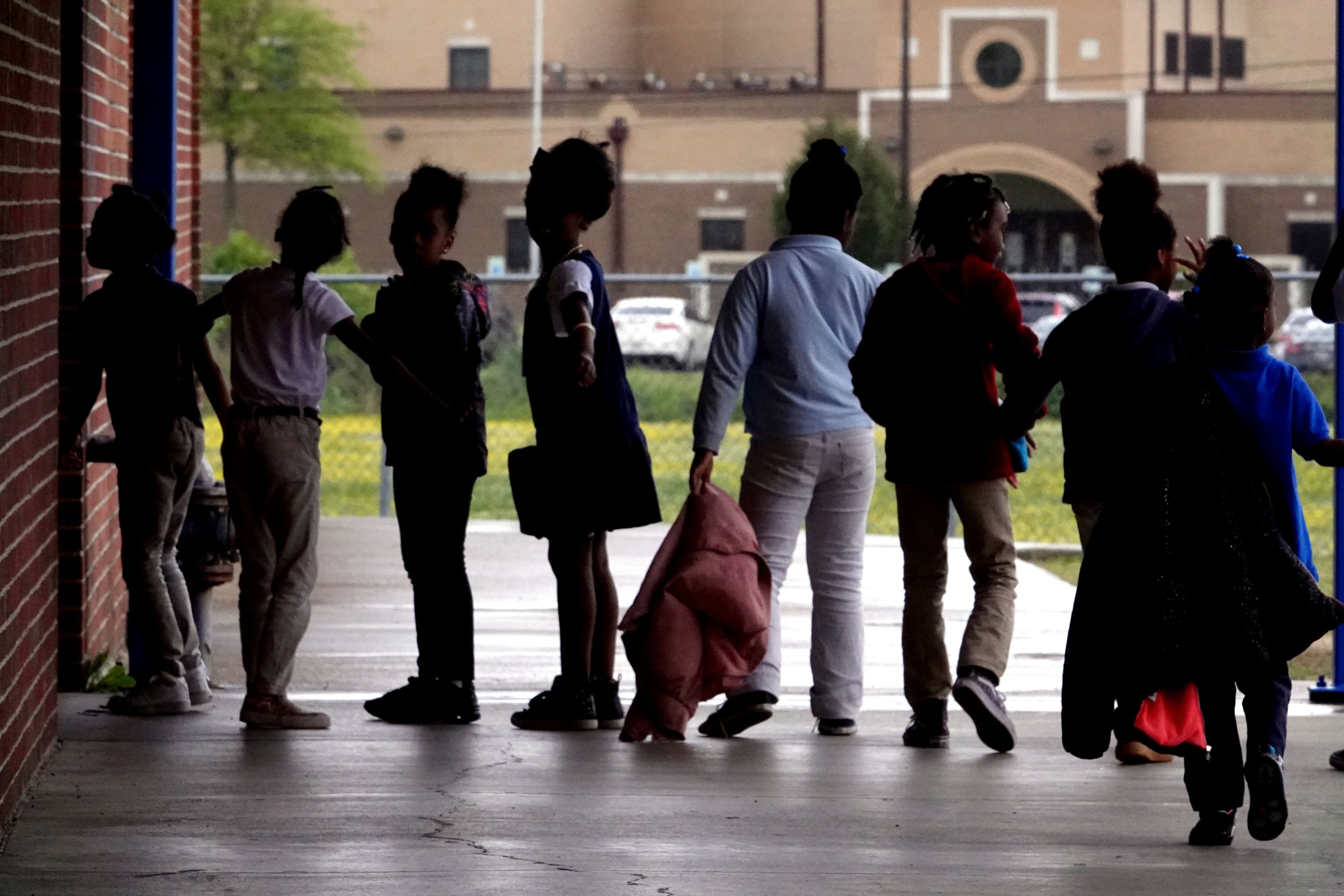Sign up for Chalkbeat’s free weekly newsletter to keep up with how education is changing across the U.S.
Fifty years ago, the landmark Supreme Court decision Milliken v. Bradley made it exceedingly difficult to desegregate schools across district lines through the federal court system.
Subsequent court rulings and recent backlash to racial equity initiatives have only made the landscape more challenging.
But a report issued Thursday by Brown’s Promise, a group that advocates for school integration, says states can still do a lot to address segregation and school funding inequities — and offers a roadmap for officials and advocates to roll up their sleeves and get to work.
“We are, across the country, too comfortable right now with the idea that segregation in our schools is just a fact of life and there’s nothing we can do about it,” said Ary Amerikaner, the co-founder and executive director of Brown’s Promise, a year-old initiative that’s housed at the Southern Education Foundation. “There’s a lot of other pathways to make forward progress.”
That call comes on the heels of the 70th anniversary of Brown v. Board of Education, the Supreme Court ruling that held segregated schools are unconstitutional. Schools are less segregated today than they were 60 years ago. But over the last three decades, many have resegregated, especially as courts have released districts from desegregation orders and school choice policies have given parents more control over where they send their kids.
The share of intensely segregated schools — where 90% to 100% of students are kids of color — has nearly tripled to 20% over the last 30 years, according to recent research released by UCLA’s Civil Rights Project. Hyper-segregated schools also have higher poverty levels — a kind of “double segregation” that translates to worse educational outcomes for kids.
To address that, Brown’s Promise is advocating a two-pronged approach: Filing lawsuits in state court — especially in places where the state constitution guarantees children certain educational rights — and changing state policy.
School segregation lawsuits are working their way through the courts in both Minnesota and New Jersey. And while Brown’s Promise is not involved in those cases, the group is watching for lessons from the litigation that could apply to other states.
The group’s state policy agenda includes what it describes as “inspiring yet imperfect” examples of recent and historic desegregation efforts:
- In 2015, Mississippi combined a racially segregated and under-resourced district with a neighboring district that was more affluent and diverse. Most school segregation exists across district lines rather than within school districts, research has found, and what happened in Mississippi worked because the merger saved money and helped improve the quality of education for kids across the consolidated district.
- Nebraska lawmakers created a regional structure that allowed 11 school districts in the Omaha area to share their tax dollars to provide more funding to disadvantaged kids. The effort ended in 2016 after around seven years in operation, but Brown’s Promise says it can serve as a model for others.
- State grants, such as those offered in New York, can help school districts plan and carry out integration efforts.
Other ideas are lighter lifts designed to spur more conversation and awareness, such as publishing data related to school segregation and per-student spending on state report cards.
The report also lays out ways that states can avoid some of the mistakes of past school integration efforts. In recent years, there’s been a greater focus on the ways school desegregation plans often put higher burdens on Black families and other families of color.
To Amerikaner, those mistakes include the layoffs and firing of many talented Black teachers when schools merged, and the use of academic-tracking policies that tend to create classrooms starkly divided by race, even when a school is supposed to be integrated.
Part of the work now, she said, is paying attention to the “actual student experience in a school and the ability of a student to feel like a real part of their school community.” That could mean making sure kids feel comfortable participating in extracurricular activities or that families feel welcome to attend school events.
The group acknowledges how challenging and politically polarizing this work can be.
But its leaders point to the results of a poll they commissioned earlier this year that found most Americans are supportive of school integration — especially if it’s paired with providing more resources to districts that serve higher-need students.
That sentiment has been echoed as the group has met with families and advocates across the country, including in Massachusetts, Colorado, and Georgia.
“That feels like what is most important to us,” Amerikaner said. “This is long-term, multi-generational work.”
Kalyn Belsha is a senior national education reporter based in Chicago. Contact her at kbelsha@chalkbeat.org.






